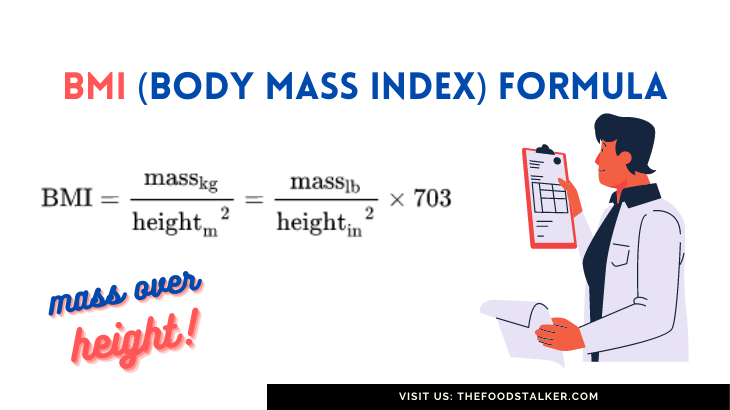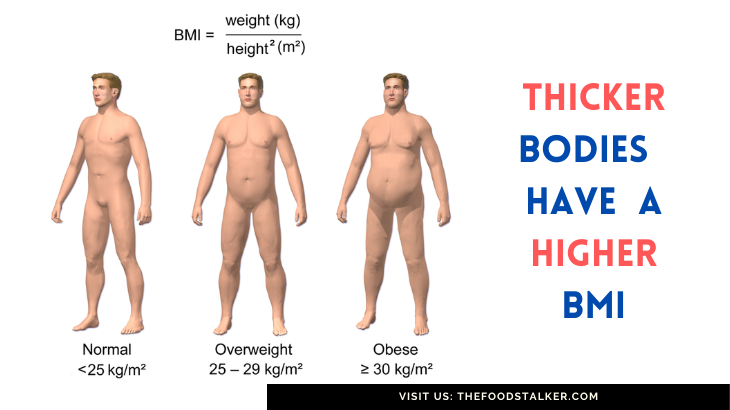Use The Food Stalker’s BMI Calculator to find your Body Mass Index. BMI is a number which indicates whether or not you have a healthy body weight. Simply enter your current weight and height then click the calculate button to see your result. You can enter your height in feet and your weight in either kg (kilograms) or lb (pounds).
Your BMI is 0
UNDERWEIGHT
This BMI calculator is for people over the age of 20 who are not pregnant. Understand that you can change your BMI by changing your weight. See our Calorie Calculator to find out how! To learn more about your body mass index result and how it is calculated, please read on:

BMI Calculator Formula
Our BMI Calculator uses the standard formula for body mass index, which is expressed in kg/m2. If you enter your height in pounds instead of kilograms, a conversion factor of 703 (kg/m2)/(lb/in2) is applied. The BMI formula relates your weight to your height to establish how thick your body is (mass over height squared):
BMI is a measure of body fat, the amount of which is estimated by figuring out how thick your body is. Yes, strange as it may sound, the whole point of calculating BMI is to find out how thick your body is, then compare your thickness to large populations of other people in your community. If you are much thicker than the average defined healthy thickness, you are classified as being overweight. If you are much thinner than the average healthy thickness level, your classification will be underweight.

Why calculate BMI?
BMI is often the first and easiest number medical professionals use to evaluate whether or not a person has a healthy weight. Most people calculate their BMI because they want to know if they are overweight, and if so how (what degree) overweight. You want to know your BMI because it is the next level up from looking in the mirror or asking a friend if you are fat. It is a more objective measure than simply standing on your bathroom scale, because BMI takes your height into account. More important than the raw body mass index value are the BMI classifications which provide a comparison against the broader population. BMI allows you to compare your weight against a widely-accepted healthy weight standard.
BMI Weight Ranges
Your BMI is expressed as a number, which you can plot on a graded number line of BMIs. Low BMI values indicate low body weight, and high BMIs describe larger body weights. For standardization purposes, the classifications of BMI weight ranges are:
- Less than 18.5 indicates “Underweight”. This is an unhealthy weight classification meaning that you should try to gain more body weight.
- Between 18.5 and 24.9 is classified “Healthy Weight”. If your BMI is in this range, you are doing well!
- Between 25 and 29.9 is the “Overweight” level. BMIs in the Overweight range mean that you should try to lose weight.
- 30 and over indicates “Obese”. When your BMI exceeds 30, you are prone to many negative health outcomes. Weight loss is necessary.
After you try a few weight and height combinations in the BMI calculator you’ll notice that each BMI weight range covers a lot of different body weights. This is a clue to why BMI is useful: it can be applied to large populations for statistical and government purposes. Statistics show that high BMI across populations causes an increase in chronic diseases like heart disease, type 2 diabetes, and colon cancer.
